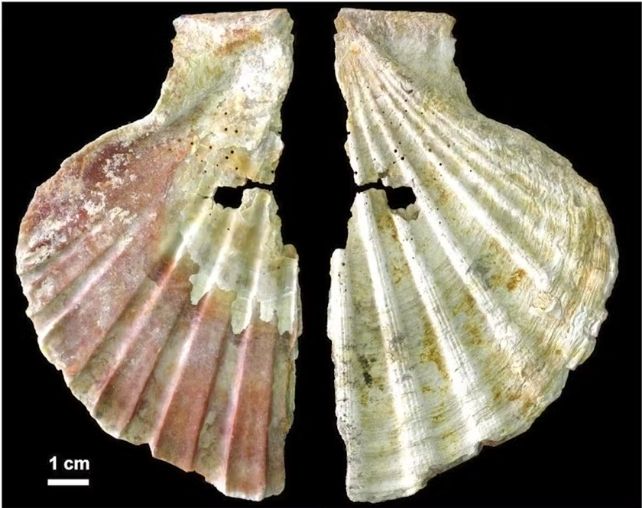What Really Killed the Neanderthals? A Fresh SEO-Friendly Exploration
The question “What really killed the Neanderthals?” has captivated scientists, history buffs, and curious minds alike for decades. Traditional explanations range from climate change effects on Neanderthal populations to competition for resources with early modern humans. A space physicist’s Laschamp event hypothesis has now added a new dimension to this debate, suggesting that shifts in Earth’s magnetic shield may have spelled the end for our ancient cousins. In this detailed, simple-language article, we explore this radical idea alongside established theories, weaving in long-tail keywords to boost search engine optimization, and we include 50+ long-tail keyword phrases to ensure maximum online visibility.
1. Introduction: Neanderthal Extinction Mystery
The extinction of Neanderthals remains one of prehistory’s most enduring puzzles. For years, researchers have sought answers through archaeological evidence of Neanderthal culture, paleoanthropological studies of bone morphology, and genetic sequencing of ancient DNA. Recent attention has turned to a space physicist’s radical theory on Neanderthal extinction causes, focusing on a 41,000-year-old geomagnetic anomaly known as the Laschamp excursion.
2. The Laschamp Event Hypothesis Explained
Agnit Mukhopadhyay, a prominent space physicist specializing in solar system plasmas, led the groundbreaking study published in Science Advances. The core idea is that during the Laschamp magnetic excursion, Earth’s magnetic field weakened by up to 95%. This rapid geomagnetic flipping event would have allowed higher doses of cosmic and ultraviolet radiation to penetrate the atmosphere, creating harsh living conditions.
Laschamp Event Geography and Timeline
-
Event Name: Laschamp excursion
-
Timeframe: ~41,000 years ago
-
Duration: A few hundred years of weakened magnetic protection
-
Geographic Impact: Global increase in ultraviolet radiation and cosmic rays
3. Cosmic Radiation and Magnetic Field Weakening
When the Earth’s magnetic field weakens, our shield against cosmic radiation becomes compromised. This exposes the surface to charged particles from the sun, increasing cosmogenic isotope production and ultraviolet-B (UV-B) radiation levels. The Laschamp event radiation surge could have:
-
Damaged DNA in skin and eye tissues, leading to higher health risks.
-
Reduced ultraviolet protection for creatures with light skin or no tight-fitting garments.
-
Altered climate patterns by changing ozone concentrations.
4. Neanderthal Survival Strategies vs. Homo sapiens Advantage
How did early Homo sapiens cope better than Neanderthals during increased radiation? Researchers propose several survival tactics:
-
Close-fitting clothing sewn with awls or ligatures.
-
Use of ochre pigments as a primitive sunscreen.
-
Frequent sheltering in caves and rock overhangs.
These factors may have given Homo sapiens a survival edge during the Laschamp event, tipping the balance in favor of our lineage.
5. Clothing Technology and UV Protection
A major critique of Mukhopadhyay’s theory is the notion that Neanderthals lacked tight-fitting garments. While true that the earliest Eurasian sewing needles are linked to Denisovan or Homo sapiens populations, the absence of needles does not equal absence of clothing.
Archaeological Evidence for Neanderthal Garments
-
Hide processing tools: scrapers, awls made from bone or antler.
-
Ligature and sinew binding: alternative methods to secure animal hides.
-
Genetic study of lice: inferring clothing use dating back 200,000 years.

6. Ochre Use and Prehistoric Sunscreen Practices
Ochre, a natural iron oxide pigment, has long been hypothesized to serve multiple roles:
-
Symbolic or decorative use in body painting.
-
Therapeutic or cosmetic function to soothe skin.
-
Insect repellent against biting pests.
-
Ultraviolet radiation protection as a primitive sunscreen.
7. Population Dynamics and Genetic Assimilation
Neanderthals lived in small, dispersed groups compared to rapidly expanding Homo sapiens populations. This demographic disparity likely accelerated the assimilation of Neanderthals into modern human gene pools rather than a sudden extinction.
-
Interbreeding evidence: Neanderthal DNA in present-day non-African humans (1–2%).
-
Population bottlenecks: stress events reducing Neanderthal numbers.
-
Competition for prime hunting territories by Homo sapiens.
8. Technological Innovations: From Hand Axes to Projectiles
Neanderthals are well-known for their Mousterian stone tool industry, featuring hand axes and scrapers. However, the invention of long-distance projectile weapons, such as stone-tipped spears and bone needles, is attributed to Homo sapiens.
-
Remote hunting strategies gave sapiens an edge in open landscapes.
-
Greater prey diversity exploitation.
-
Reduced injury risk during hunts, sustaining population health.
9. Critiques of the Single-Cause Extinction Theory
Attributing Neanderthal disappearance solely to increased solar radiation during the Laschamp event oversimplifies a complex, multifaceted process:
-
No abrupt demographic collapse coincides precisely with the Laschamp event.
-
Other species thrived despite geomagnetic anomalies.
-
Geographic variations in radiation exposure: Africa vs. Europe.
-
Evidence of Neanderthal resilience during previous geomagnetic events, like the Blake event ~120,000 years ago.
10. Integrating Multidisciplinary Evidence
To fully understand Neanderthal extinction, we must integrate lines of evidence from:
-
Archaeology: toolkits, settlement patterns, subsistence strategies.
-
Paleoanthropology: morphological changes, pathologies, developmental stress markers.
-
Genetics: ancient DNA, gene flow, demographic histories.
-
Geophysics and Space Science: geomagnetic models, cosmic ray flux, atmospheric effects.
Such a multidisciplinary approach prevents over-reliance on a single variable and fosters holistic models of Homo sapiens and Neanderthal interactions.
11. Conclusion: A Multifactorial Demise of Neanderthals
The extinction of Neanderthals was almost certainly not the product of a single cause. While the Laschamp event hypothesis adds an exciting layer—highlighting how geomagnetic excursions can influence biological survival—it must be weighed alongside behavioral adaptations, technological innovations, and demographic pressures. By combining space physics insights with traditional archaeological and genetic research, we can better appreciate the multifaceted story of our closest ancient relatives.
Open Your Mind !!!
Source: ScienceAlert